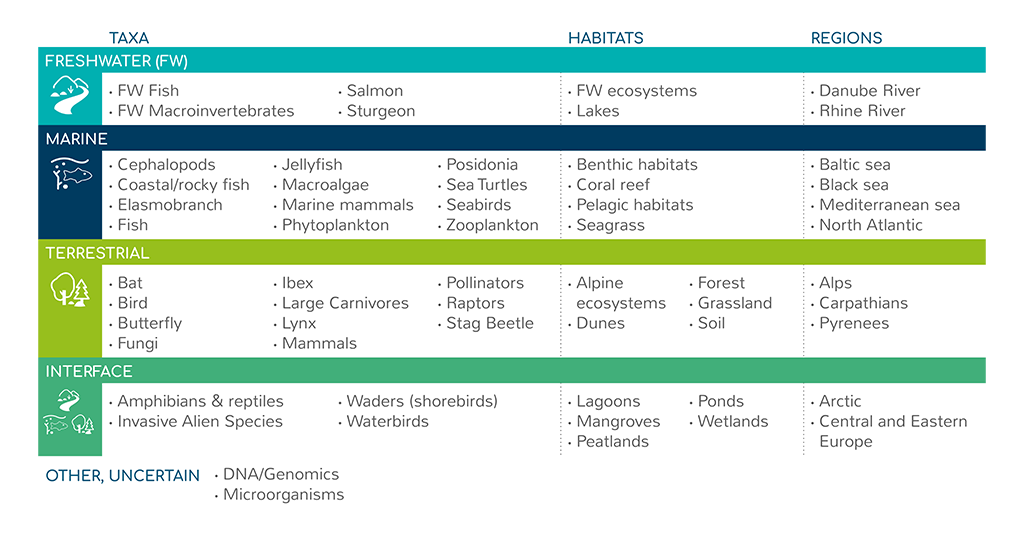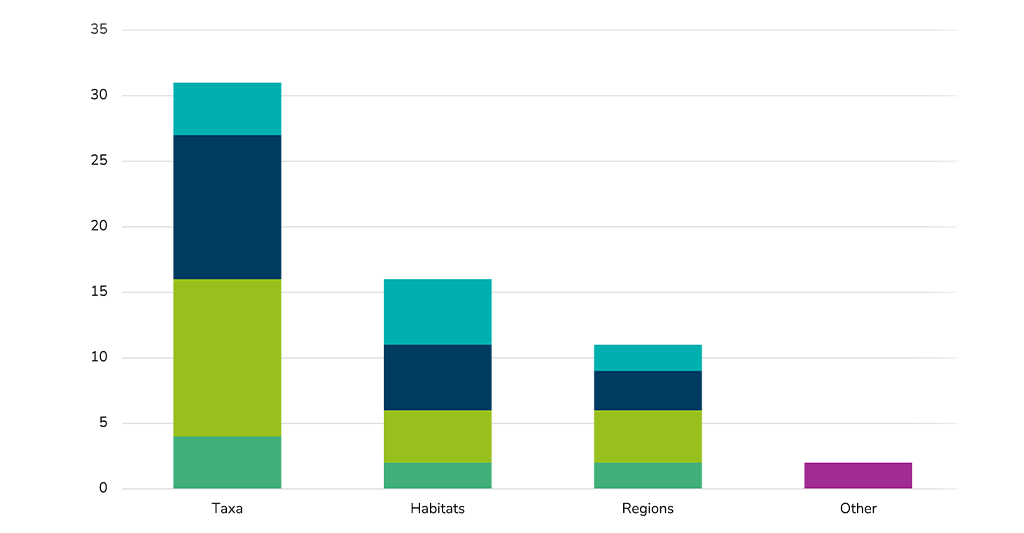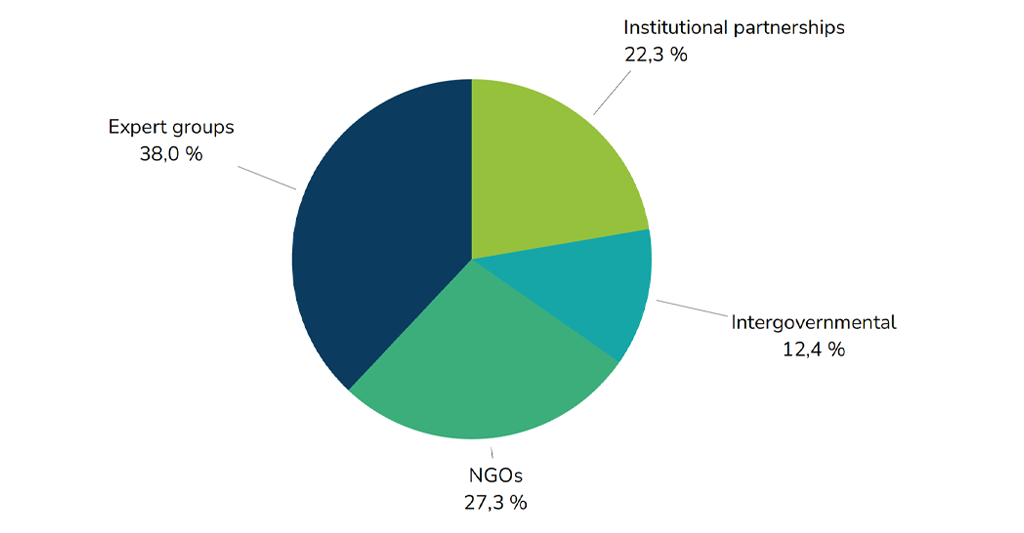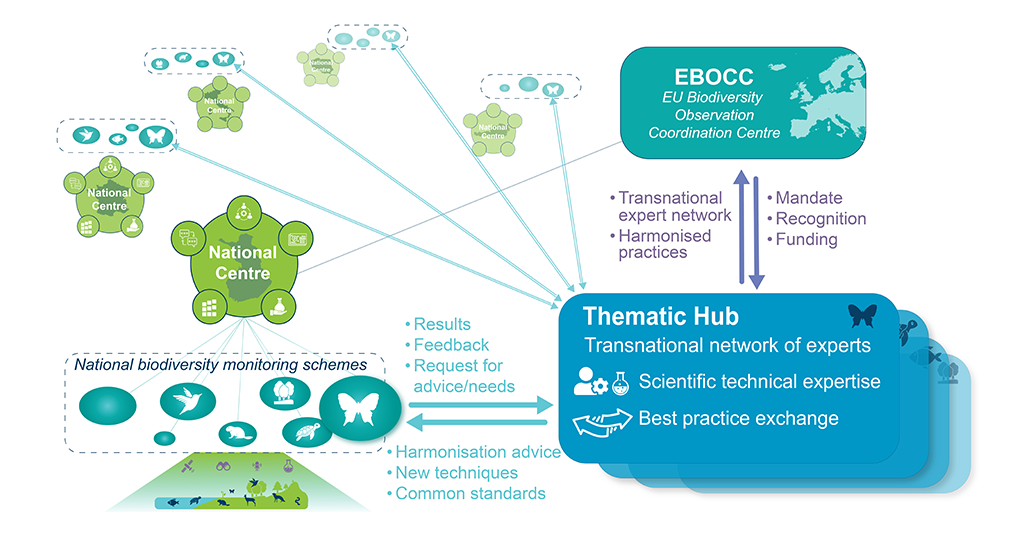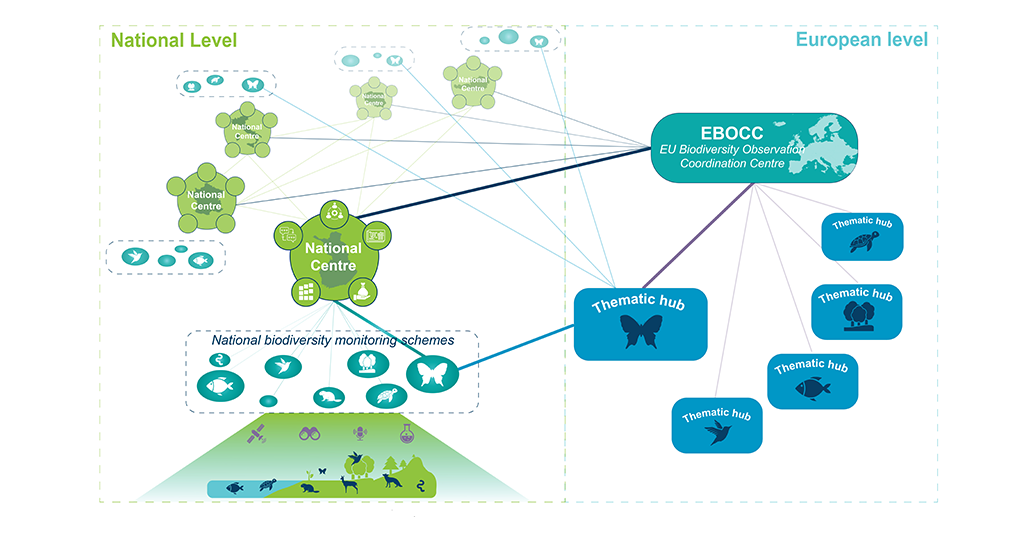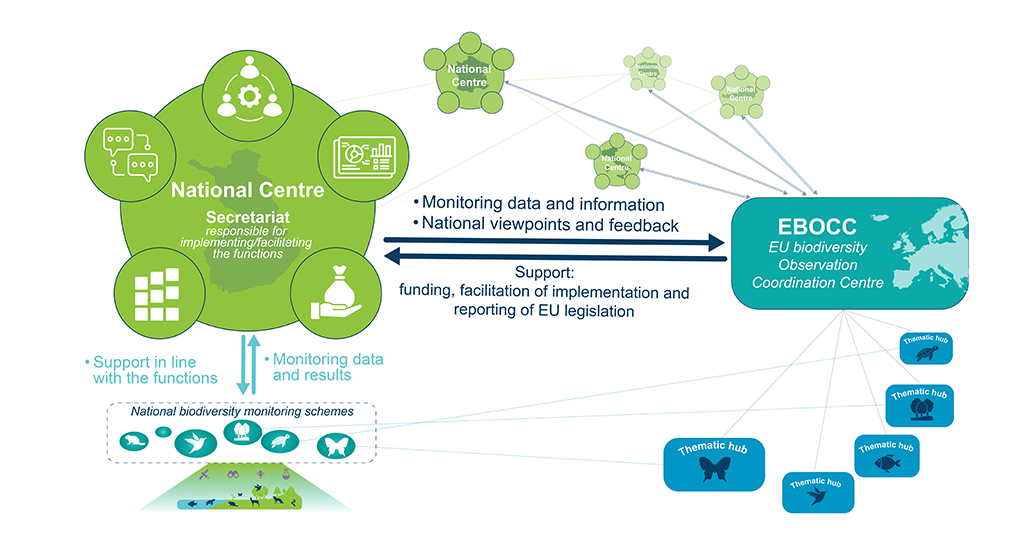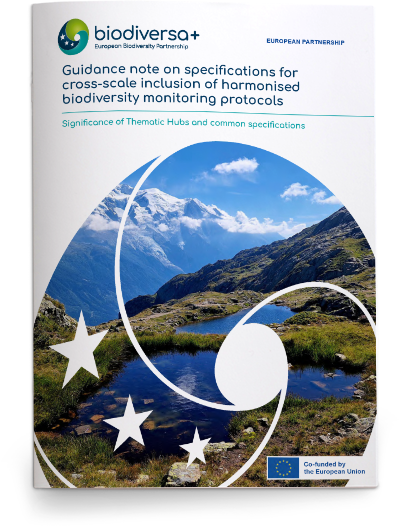“Guidance note on specifications for cross-scale inclusion of harmonised biodiversity monitoring protocols”
Published: October 2025 | DOI: 10.5281/zenodo.17310681
This guidance note provides practical recommendations for making biodiversity monitoring across Europe more coherent, comparable and policy-relevant, while respecting local diversity and existing expertise.
Building on Biodiversa+’s earlier Guide on harmonising biodiversity monitoring protocols across scales (2023), this new publication takes the next step by proposing how harmonisation can be implemented in practice. It introduces common minimum requirements for biodiversity monitoring protocols and a new framework based on expert-led Thematic Hubs.
Key takeaways
- 60+ monitoring communities mapped: The report identifies Europe’s existing biodiversity monitoring networks, from pollinators and soil biodiversity to marine mammals, and analyses how they can collaborate more effectively.
- Common minimum requirements defined: A shared set of essential protocol elements (objectives, variables, sampling units, reporting formats) can enable comparability without imposing uniformity.
- Thematic Hubs proposed: Expert-driven platforms would align monitoring efforts across scales, linking national centres with European coordination bodies such as the future European Biodiversity Observation Coordination Centre (EBOCC).
- Next steps outlined: The report recommends formal recognition and resourcing of Thematic Hubs and calls for closer collaboration across monitoring communities.
Mapping Europe’s biodiversity monitoring communities
The report begins with a detailed overview of the biodiversity monitoring landscape in Europe. It identifies around 60 active monitoring communities and analyses their structure, scope and governance. These communities are expert networks dedicated to specific topics. They range from NGO-led citizen science networks to intergovernmental working groups established under EU directives.
Despite their diversity, they share a common goal: to collect reliable biodiversity data and make it useful for policy and conservation. The mapping confirms that these existing communities form a strong foundation for coordinated monitoring across Europe.
This table provides an overview of the monitoring communities identified in the report.
| Theme | Realm | Type | Network / Group Name | Scope | Network Type |
|---|---|---|---|---|---|
|
Loading communities...
|
|||||
No communities found matching your criteria.
Towards common minimum requirements
The report defines common minimum requirements for biodiversity monitoring protocols. Rather than promoting one-size-fits-all methods, these requirements identify which elements are essential to harmonise to ensure data comparability and interoperability (e.g., clearly defined monitoring objectives, core variables and sampling units, transparent reporting formats and metadata standards).
Harmonisation is not about strict standardisation, it is about strategic alignment: agreeing on a shared backbone that enables integration of diverse data while allowing flexibility for national and local contexts. This balance ensures that monitoring remains scientifically robust, adaptable, and relevant for policy implementation at multiple scales.
| Element | Requirement | Justification & Recommendation |
|---|---|---|
| 1. Objective | STRICT | The objective sets the foundation of the protocol—it defines the purpose and guides all downstream decisions (what, how, when, where). This must be clearly stated and aligned with policy or scientific goals.
Recommendation: Define SMART objectives (Specific, Measurable, Achievable, Relevant, Time-bound). To do so, use a shared vocabulary, we recommend to follow the EBV grammar, and align with existing frameworks (e.g. EU directives, GBF, CBD). |
| 2. Object of Monitoring | STRICT | The “what”—species, communities, habitats, or processes—must be precisely defined to ensure consistency in data collection and interpretation.
Recommendation: Define core monitoring objects based on a referential list (e.g. GBIF backbone taxonomy, IUCN global ecosystem typology, EUNIS habitat classification list, …), and allow optional additions if well documented. |
| 3. Scale (Spatial/Temporal) | STRICT (core) + FLEXIBLE (optional) | Ecological, logistical, and political contexts vary across countries. Thus, scale must be adaptable—but minimum spatial and temporal coverage is needed to ensure comparability and allow aggregation.
Recommendation: Define minimum scale on which you expect results (e.g., national or regional coverage, frequency), according to the policy needs. Independent scaling up is possible where feasible. |
| 4. Variables Measured | STRICT (core) + FLEXIBLE (optional) | Variables (e.g., species richness, abundance, biomass) are central to analysis. Fixing core variables allows harmonisation; optional ones can enrich interpretation.
Recommendation: EBVs are a useful backbone, but any variable is fine as long as the definitions and units are agreed upon. Extended versions of the protocol can include additional variables. |
| 5. Sampling Unit (e.g., plot size) | STRICT | Consistency in terminal sampling units (or the smallest unit to which a value is attributed) is vital for comparable measurements. While ecosystem-specific units may differ, a harmonised definition (e.g., minimum area, homogeneity) must be used across sites.
Recommendation: Establish standard unit templates, with clear guidance for implementation. |
| 6. Sampling Strategy (e.g., stratified, systematic, random..) | FLEXIBLE | Strategy depends on habitat conditions and objectives. Flexibility during design is acceptable within a statistical framework, but once defined, it must remain fixed for implementation.
Recommendation: Connect with a bio-statistician for developing and updating the strategy. We recommend a stratified sampling for robustness, including substitution options to handle sites accessibility. |
| 7. Sample Size & Frequency | STRICT (core) + FLEXIBLE (optional) | Minimum effort must ensure statistical power to detect change. Beyond that, expanded sampling frequency or number of sites can increase at any scale according to needs.
Recommendation: Conduct or refer to power analyses to define and adjust minimum sampling effort. Extended protocols can be applied on a subset of sites. Balance between scale and in-depth analysis of the variable could be achieved through the application of an extended protocol on a subset of sites. |
| 8. Reporting | STRICT | Countries must report their results using shared formats and timelines that apply to the EBVs and indicators, even if protocols vary.
Recommendation: Define reporting templates, define data standards that apply to results, for instance one smooth trend and linear trends for 6, 10, 24 year periods in accordance with the nature Directives and Red Lists. |
| 9. Governance | FLEXIBLE | The monitoring schemes are often governed at national or sub-national scales. Keeping a close link with the observers is valuable for data quality and cultural adaptation.
Recommendation: There is no need to harmonise the implementation of the monitoring schemes. |
Thematic Hubs: a framework for collaboration
To translate these principles into action, Biodiversa+ proposes the creation of Thematic Hubs: expert-driven, cross-scale platforms that coordinate the work of monitoring communities within specific biodiversity domains.These hubs are envisioned as the technical and collaborative backbone of a distributed European biodiversity monitoring system. They would:
- facilitate structured dialogue and knowledge exchange,
- align monitoring objectives and protocols within and between communities,
- connect national monitoring centres with European coordination efforts such as the future EBOCC.
Through this architecture, Thematic Hubs would play a central role in improving data interoperability, guiding methodological convergence, and strengthening Europe’s collective capacity for biodiversity observation and reporting.
Key recommendations and next steps
The report calls for:
- Formal recognition and resourcing of Thematic Hubs, to ensure continuity and expert participation;
- Clear operating guidelines defining their roles, governance, and connection to EBOCC and national centres;
- Enhanced collaboration and transparency between monitoring communities, building on shared standards and open data principles.
In the coming years, Biodiversa+ will test these recommendations through pilot activities and community engagement, including the first European Biodiversity Monitoring Week planned for 2026. These initiatives aim to make harmonised biodiversity monitoring a practical reality, strengthening Europe’s ability to track progress and inform effective conservation action.
